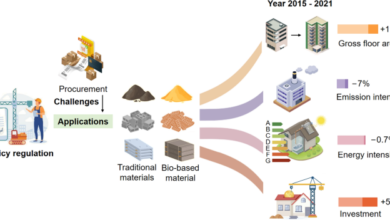Protecting Your Business: The Role of Vulnerability Assessments
What Are Vulnerability Assessments?
A vulnerability assessment is a systematic review of security weaknesses in an information system. These assessments help organizations identify, quantify, and prioritize vulnerabilities to mitigate potential threats. For a comprehensive understanding, you can explore Fortinet’s take on vulnerability assessments, which provides in-depth insights into the process and benefits of these evaluations. By engaging in regular vulnerability assessments, organizations can stay ahead of cybercriminals, ensuring that any weaknesses in their digital infrastructure are identified and addressed before they can be exploited.
Why Are They Important?
The importance of vulnerability assessments cannot be overstated in today’s digital landscape. Cyber threats are becoming increasingly sophisticated, and a single breach can devastate an organization. These assessments are a critical preventive measure to save a company from potential financial loss, reputational damage, and legal ramifications. Companies can proactively identify and resolve security weaknesses by conducting regular vulnerability assessments before malicious actors exploit them. This proactive approach ensures the safety of sensitive data and builds trust with clients and stakeholders who rely on the organization’s robust cybersecurity measures.
Critical Components of a Vulnerability Assessment
- Asset Identification: Inventory all hardware, software, and network components to understand what needs protection. This step involves creating a comprehensive list of every asset within the organization’s IT infrastructure, which is crucial for a thorough assessment.
- Threat Assessment: Recognize potential threats to each asset, including malware, hackers, or insider threats. Understanding the nature and source of potential threats helps tailor the assessment approach accordingly.
- Vulnerability Analysis: Identify and categorize vulnerabilities using automated tools and manual techniques. This process helps prioritize vulnerabilities based on their severity and potential impact.
- Risk Assessment: Evaluate the potential impact of exploiting these vulnerabilities. This step involves calculating the likelihood of a vulnerability being exploited and the possible damage it could cause.
- Remediation Planning: Formulate actions to mitigate or eliminate identified vulnerabilities. This involves devising a strategic plan to address the most critical vulnerabilities, ensuring the organization’s security posture improves significantly.
Steps to Conducting an Effective Assessment
- Define the Scope: Clearly define the scope of the assessment, including which systems and processes will be reviewed. This step ensures that the evaluation is focused and covers all critical areas of the organization’s IT environment.
- Gather Information: Collect detailed information about your systems, including hardware configurations, software versions, and network architecture. Accurate information is essential for identifying potential vulnerabilities accurately.
- Identify Vulnerabilities: Use automated tools and manual processes to detect potential weaknesses. Combining both methods increases the thoroughness of the assessment, leaving no stone unturned.
- Evaluate Risk: Assess the likelihood of each vulnerability being exploited and its potential impact on the organization. This risk evaluation helps prioritize remediation efforts based on the severity of the vulnerabilities.
- Develop Mitigation Strategies: Prioritize vulnerabilities and create a plan to address them, first focusing on the most critical issues. A well-defined mitigation strategy ensures that the organization’s security posture is improved systematically.
- Report and Remediate: Document findings and take corrective actions to fix the vulnerabilities. Thorough documentation is vital for tracking the progress of remediation efforts and demonstrating due diligence.
- Review and Repeat Regularly: Conduct regular assessments to ensure ongoing security and adapt to new threats. Continuous reassessment helps maintain a robust security posture in an ever-evolving threat landscape.
Common Vulnerabilities to Look Out For
Organizations should be vigilant for common vulnerabilities, including:
- Outdated Software: Ensure all software is up-to-date to avoid exploitation of known vulnerabilities. Cyber attackers often exploit outdated software because they know its security flaws.
- Weak Passwords: Implement robust password policies and encourage the use of password managers. Easy-to-guess passwords can provide a backdoor for unauthorized access to critical systems.
- Unpatched Systems: Regularly apply patches and updates to operating systems and applications. Missing patches can leave systems vulnerable to attacks that exploit known vulnerabilities.
- Misconfigured Firewalls: Periodically review and update firewall rules. Incorrect configurations can expose an organization’s network to intrusions and unauthorized access.
- Unsecured APIs: Secure application programming interfaces (APIs) to prevent unauthorized access. APIs are often used to interact with critical systems, and if left unsecured, they can be an open gateway for cyber attackers.
Choosing the Right Tools and Services
Selecting the appropriate tools and services for vulnerability assessments can significantly enhance the process’s effectiveness. When Using tools, it’s crucial to consider aspects such as ease of use, accuracy, and comprehensiveness. Various resources are available to help organizations evaluate different tools.
Real-Life Examples of Security Breaches Prevented
Vulnerability assessments have proven critical in thwarting potential breaches. For instance, a healthcare provider safeguarded sensitive patient data by identifying and patching vulnerabilities in their internal systems. This proactive approach protected patient information and avoided costly legal repercussions. Such examples underscore the importance of regular vulnerability assessments in maintaining a robust security posture and preventing incidents that could have severe implications for the business and its clients.
Conclusion and Ongoing Maintenance
Vulnerability assessments are a fundamental aspect of robust cybersecurity practices. Regular assessments help organizations stay ahead of threats by continually identifying new vulnerabilities and ensuring practical remediation efforts. Continuous monitoring and updated security policies are essential to adapt to the evolving cyber threat landscape. By prioritizing and addressing vulnerabilities consistently, organizations can maintain the integrity and security of their digital infrastructure, ultimately fostering a more secure and trustworthy environment for their business operations.
Keep an eye for more latest news & updates on USA Tech Magazine!






